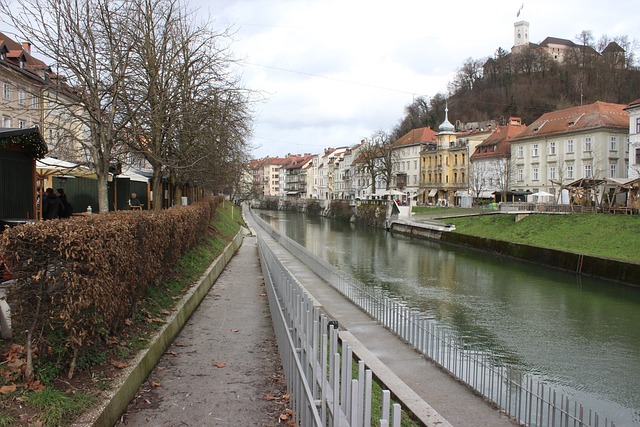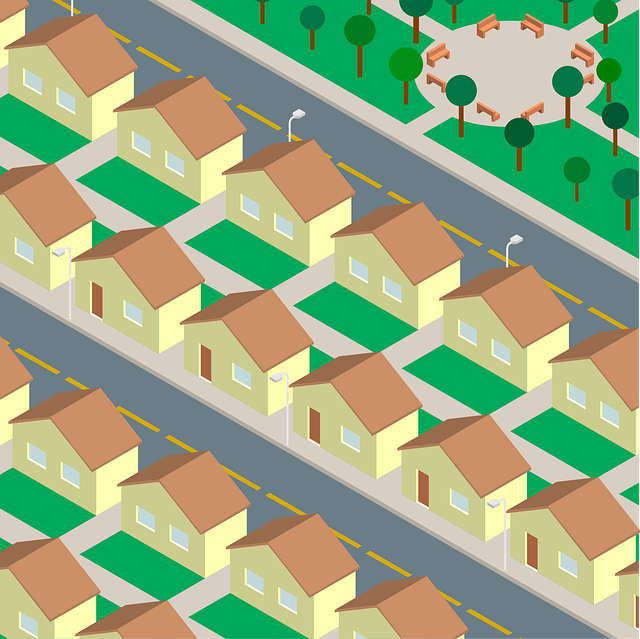Karachi, Pakistan's sprawling urban center, faces severe air quality challenges indicated by high Air Quality Index (AQI) levels, primarily driven by industrial emissions, vehicular activities, construction, and open waste burning. These factors contribute to hazardous pollution levels, particularly fine particulate matter (PM2.5), posing significant health risks, especially to children, the elderly, and those with pre-existing conditions. To combat this issue, Karachi requires a multi-faceted approach involving stricter emission controls, sustainable transportation promotion, green space enhancement, and regular air quality monitoring for informed policy decisions.
“In the bustling metropolis of Karachi, understanding air quality is paramount for its 20 million residents. This article explores the intricate factors shaping the air we breathe in Muslimabad Society, particularly through the lens of the Air Quality Index (AQI). We delve into the key contributors to Karachi’s air pollution, its current status, and the significant health risks it poses. Additionally, practical strategies are presented to foster healthier air environments, offering a roadmap for a cleaner, more sustainable future for Karachi.”
- Understanding the Air Quality Index (AQI) in Karachi
- Factors Affecting Air Quality in Muslimabad Society, Karachi
- Current Air Quality Levels and Its Implications
- Health Risks Associated with Poor Air Quality in Karachi
- Strategies for Improving and Maintaining Healthy Air in Muslimabad Society
Understanding the Air Quality Index (AQI) in Karachi

Karachi, as a bustling metropolis, faces significant challenges when it comes to air quality. Understanding the Air Quality Index (AQI) is crucial for gauging the city’s environmental health. The AQI provides a standardized measure of air pollution levels by assigning a numerical value based on various pollutants, such as nitrogen oxides, sulfur dioxide, and particulate matter. In Karachi, this index serves as a vital tool to assess the safety of outdoor activities and the overall well-being of its residents.
The AQI ranges from 0 to 500, with lower values indicating better air quality. When the AQI surpasses 100, it signifies moderate pollution levels, while values above 300 represent hazardous conditions. Karachi’s diverse industrial and vehicular activities contribute to elevated AQI readings, especially during certain seasons. Therefore, residents are advised to stay informed about daily AQI updates to take necessary precautions, ensuring their health and safety in this vibrant yet challenging urban environment.
Factors Affecting Air Quality in Muslimabad Society, Karachi

In Karachi, particularly within the Muslimabad Society, several factors significantly influence air quality. One primary factor is industrial emissions from nearby manufacturing plants and construction sites. The constant activity in these areas contributes to a buildup of pollutants like sulfur dioxide and nitrogen oxides. Additionally, traffic congestion is a major contributor, with vehicles emitting toxic gases and particulate matter, especially during peak hours.
Another critical aspect is the burning of solid fuels for domestic cooking and heating. Many residents in Muslimabad Society rely on wood, coal, and other biomass for daily needs, leading to increased levels of particulate matter (PM2.5 and PM10) in the air. Moreover, weather conditions play a role; stagnant atmospheric conditions during certain seasons trap pollutants near the ground, exacerbating air quality issues. These interconnected factors demand attention to mitigate their impact on the health and well-being of Karachi’s residents.
Current Air Quality Levels and Its Implications

In Karachi, the air quality index (AQI) has been a growing concern for residents and environmental experts alike. The current AQI levels in the city often exceed safe limits, particularly during peak pollution seasons. This urban center’s unique geographical location and high population density contribute to the concentration of pollutants in the air, leading to poor visibility and health hazards.
The implications of these high AQI readings are significant. They can cause respiratory issues, aggravate existing conditions like asthma, and even lead to cardiovascular problems. The city’s residents, especially children and the elderly, are the most vulnerable. In light of these concerns, it is imperative for Karachi’s authorities to implement stricter pollution control measures, promote awareness campaigns, and encourage sustainable practices to mitigate air pollution levels and ensure a healthier environment for all its citizens.
Health Risks Associated with Poor Air Quality in Karachi

The air quality index (AQI) in Karachi, Pakistan, has been a cause for concern among residents and health experts due to its consistent high levels, often exceeding safe limits. With an estimated population of over 16 million people, the bustling metropolis of Karachi faces unique challenges when it comes to air pollution. The primary sources of poor air quality include vehicle emissions, industrial activities, construction sites, and open burning of waste. These factors contribute to a complex mix of pollutants, with fine particulate matter (PM2.5) being one of the most hazardous.
Poor air quality in Karachi poses significant health risks. Short-term exposure can lead to respiratory issues such as coughing, wheezing, and difficulty breathing, while long-term exposure may result in more severe chronic conditions like asthma, bronchitis, and even cardiovascular diseases. Children, the elderly, and individuals with pre-existing health conditions are particularly vulnerable. The city’s warm and humid climate further exacerbates the problem, creating a stagnant air mass that traps pollutants, leading to higher AQI levels and increased health concerns for its residents.
Strategies for Improving and Maintaining Healthy Air in Muslimabad Society

In Karachi, or Muslimabad as it’s affectionately known, improving and maintaining healthy air quality is a collective responsibility. A multifaceted approach is necessary to combat the city’s notorious air pollution. One key strategy involves promoting sustainable transportation options like cycling and public transit to reduce vehicle emissions. Encouraging electric vehicle adoption and implementing stricter emission standards for industries can also significantly cut down pollutants. Additionally, planting more trees and creating green spaces helps absorb harmful substances, making these areas safer and healthier for residents.
Community engagement plays a crucial role in this initiative. Educating folks on the impact of everyday choices like using energy-efficient appliances and reducing waste can lead to collective action. Implementing regular air quality monitoring systems will provide valuable data to inform policy decisions. Collaboratively, these efforts can foster a cleaner, healthier environment for all residents of Muslimabad, ensuring a better quality of life.
The air quality in Muslimabad Society, Karachi, is a pressing issue that demands immediate attention. By understanding the Air Quality Index (AQI) and its influencing factors, we can identify strategies to mitigate the health risks associated with poor air quality. Implementing these measures will not only improve the current air quality levels but also ensure a healthier future for the society’s residents. Karachi, as a vibrant metropolis, has the potential to become a model for sustainable practices that can revolutionize air quality management and set a benchmark for other urban areas.
